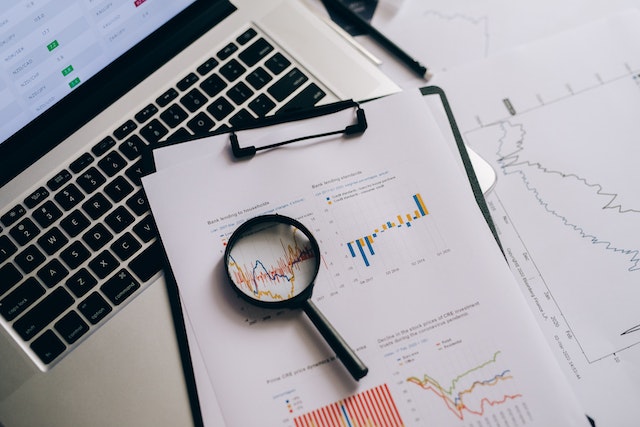Artificial Intelligence (AI) has become a revolutionary tool across many industries, including finance. With its ability to process large datasets, identify patterns, and predict future trends, AI is transforming how businesses approach financial forecasting. In this article, we will explore how AI can be leveraged for financial forecasting, its benefits, the challenges faced, and best practices for successful implementation.
1. Introduction to AI Financial Forecasting
Financial forecasting involves predicting future financial performance based on historical data and various economic factors. Traditionally, it was done manually or using basic statistical models. However, the advent of AI has drastically improved the accuracy and speed of financial forecasting by analyzing large volumes of data, detecting hidden patterns, and making predictions.
AI Financial Forecasting refers to the application of AI models and algorithms, such as machine learning (ML) and deep learning, to predict future financial outcomes. AI-based systems can help businesses better understand market trends, forecast revenues, assess risks, and make informed investment decisions.

2. Benefits of AI in Financial Forecasting
Leveraging AI for financial forecasting offers a wide range of benefits. Here are some of the key advantages:
a. Enhanced Accuracy
AI systems can analyze vast amounts of data from various sources, leading to more precise financial predictions. They can consider multiple variables, such as market conditions, consumer behavior, and external economic factors, which traditional methods may overlook.
b. Real-time Analysis
AI can process and analyze data in real-time, allowing companies to get up-to-date financial forecasts. This real-time capability enables businesses to respond quickly to market changes and adjust their strategies accordingly.
c. Automation of Complex Processes
AI automates time-consuming manual tasks, such as data collection, organization, and basic analysis. By reducing human intervention, it lowers the risk of errors and enables financial professionals to focus on higher-level decision-making.
d. Improved Risk Management
AI-powered financial forecasting tools can detect potential risks and flag anomalies in data. They provide early warnings for potential downturns in the market, helping businesses minimize risks and safeguard investments.
e. Scalability
AI systems are easily scalable, meaning they can handle growing datasets without compromising performance. Whether a business is expanding or entering new markets, AI can adapt to increasing data complexity.
3. Types of AI Models Used in Financial Forecasting
Different AI models are utilized for, each designed to handle specific types of financial data and prediction tasks. The three most commonly used AI models in are:
a. Machine Learning Models
Machine learning (ML) models, such as regression, decision trees, and random forests, are popular for forecasting. They use historical data to detect patterns and predict future financial outcomes.
b. Deep Learning Models
Deep learning models, particularly neural networks, are highly effective for analyzing complex data sets. These models mimic human brain functions and can identify intricate relationships between variables, making them useful for forecasting highly dynamic financial markets.
c. Natural Language Processing (NLP) Models
NLP is used to analyze unstructured data, such as news articles, reports, and social media, which can influence financial markets. By incorporating sentiment analysis and extracting relevant information, NLP models can help predict how external factors might affect financial outcomes.
4. Challenges in AI Financial Forecasting
Despite its many advantages, leveraging AI for financial forecasting presents certain challenges:
a. Data Quality and Availability
The accuracy of AI models largely depends on the quality of the data they are fed. Inconsistent, incomplete, or biased data can lead to inaccurate predictions. Additionally, access to relevant and comprehensive data can be a barrier for some businesses.
b. Model Interpretability
AI models, especially deep learning ones, are often seen as “black boxes.” It can be challenging for financial professionals to understand how these models arrive at specific predictions, making it difficult to validate and explain the results to stakeholders.
c. Implementation Costs
While AI tools have become more accessible, the initial investment for building and training AI models can be expensive. Small and medium-sized businesses (SMBs) may struggle to afford the infrastructure required to leverage AI.
d. Regulatory Compliance
Financial is subject to strict regulatory requirements, and the use of AI must align with these standards. Ensuring compliance with evolving regulations while using AI for forecasting can be complex.
e. Ethical Considerations
AI models may inadvertently introduce biases, leading to discriminatory financial predictions. It’s crucial to ensure that AI systems are built and used ethically to avoid skewing results that could affect certain groups unfairly.
5. Best Practices for Leveraging AI in Financial Forecasting
To maximize the benefits of AI in financial forecasting, businesses should follow these best practices:
a. Ensure Data Quality
Clean, well-structured, and diverse data is essential for accurate AI forecasting. Companies should invest in proper data collection and cleansing processes to eliminate inconsistencies.
b. Choose the Right AI Model
Different models are suited for different tasks. Businesses should carefully select an AI model that aligns with their specific forecasting needs, whether it’s predicting cash flows, assessing market trends, or analyzing consumer behavior.
c. Invest in Model Transparency
To overcome challenges related to model interpretability, businesses should prioritize using models that allow for better transparency and explainability. Understanding how models generate their forecasts can help ensure their predictions are reliable and compliant.
d. Continuous Monitoring and Updating
Financial markets are dynamic, so AI models need regular updating to stay relevant. Continuous monitoring ensures that predictions are based on the latest data and are reflective of current market conditions.
e. Collaborate with Experts
While AI can automate many tasks, human oversight is still essential. Collaboration between data scientists and financial professionals ensures that AI models are accurately applied to the forecasting process.
6. AI Financial Forecasting vs. Traditional Methods
To understand the impact of AI on , it’s helpful to compare AI-powered techniques with traditional methods.
| Aspect | AI Financial Forecasting | Traditional Methods |
|---|---|---|
| Data Processing Speed | Fast, real-time processing | Slow, manual processing |
| Accuracy | High, especially with complex datasets | Lower, limited by manual calculations |
| Scalability | Easily scalable for large datasets | Difficult to scale |
| Risk Management | Proactive identification of risks | Reactive risk management |
| Human Intervention | Minimal, automated processes | Requires significant manual effort |
| Cost | High initial investment, but efficient over time | Lower upfront cost, but labor-intensive |
7. Case Studies: Successful Implementation of AI in Financial Forecasting
a. JP Morgan Chase
JP Morgan Chase has successfully integrated AI in financial forecasting through its machine learning algorithms. These models analyze millions of data points to predict market fluctuations and client behavior, allowing the company to optimize its investment strategies and improve risk management.
b. Walmart
Walmart uses AI for financial forecasting to predict sales trends, manage inventory, and optimize supply chain operations. By leveraging machine learning algorithms, the company can forecast sales at both local and global levels, resulting in significant cost savings and more accurate budgeting.
Analysis Table of AI Financial Forecasting
| Category | AI Financial Forecasting |
|---|---|
| Data Input | Historical data, market trends, external factors |
| Key Technologies | Machine Learning, Deep Learning, NLP |
| Main Applications | Revenue forecasting, risk management, market trend analysis |
| Implementation Time | Medium to long-term |
| ROI Timeframe | Medium to long-term, depending on investment |
| Required Expertise | Data scientists, financial experts |
Comparative Table: AI Financial Forecasting vs Traditional Forecasting
| Criteria | AI Financial Forecasting | Traditional Forecasting |
|---|---|---|
| Forecast Speed | Real-time | Days to weeks |
| Accuracy | High, with large datasets | Medium to low |
| Flexibility | Highly adaptable to new data and conditions | Limited flexibility |
| Cost | Higher upfront costs, lower operational costs | Lower initial costs, higher manual labor |
| Human Involvement | Low, mostly automated | High |
8. Conclusion
AI is transforming by enhancing accuracy, improving efficiency, and offering real-time insights. While there are challenges, such as data quality and model interpretability, businesses that adopt AI-powered forecasting solutions can stay ahead of the competition by making better-informed financial decisions. By following best practices like ensuring data quality and continuously monitoring models, organizations can fully leverage the power of AI for










